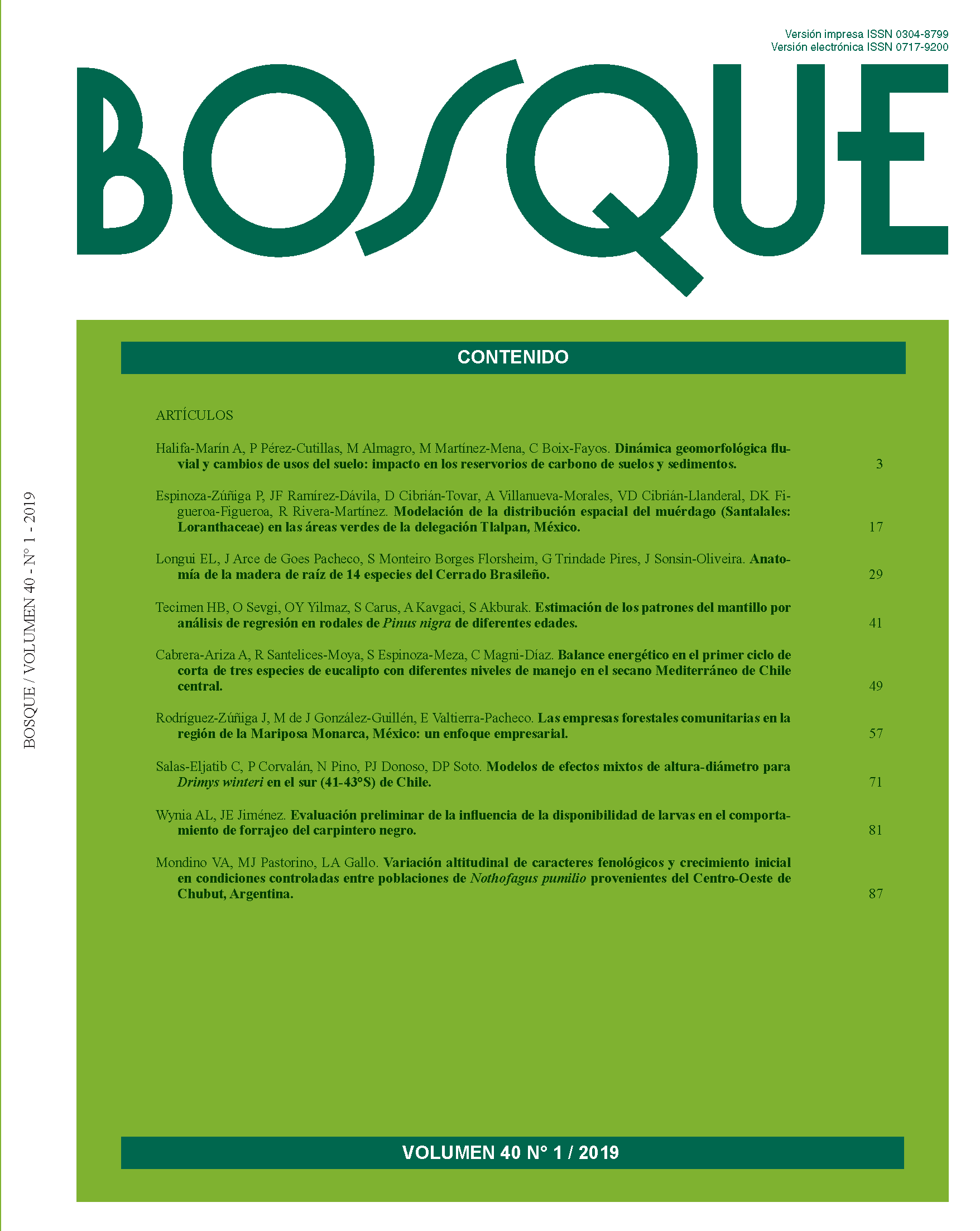Energy balance in the first cutting cycle of three eucalyptus species with different levels of management in the Mediterranean drylands of central Chile
Main Article Content
Abstract
The Mediterranean Secano of central Chile is a degraded zone, with high rates of erosion and a very fluctuating climate, with long periods of low rainfall, which limits its productivity. An alternative for this area is the cultivation of energy-bound eucalyptus species. The objective of this research was to evaluate the energy balance at the field level in the first rotation (3 years) of three eucalyptus species, comparing basic and intensive management. For this purpose, the species Eucalyptus camaldulensis, Eucalyptus tereticornis and Eucalyptus globulus were established with two different levels of management, one basic (20 cm deep subsoiling, planting and harvesting) and another intensive (50 cm deep plowing, subsoiling, application of herbicide, planting, fertilization and harvesting). Results show that for both types of management the energy balance is positive, being higher for intensive management. Values ranged between 102,900 and 137,890 MJ ha-1 year-1 in the basic management and 125,730 and 160,050 MJ ha-1 year-1 in intensive management, depending in both cases on the species. In conclusion, energy plantations with eucalyptus species have a positive energy balance and are a viable alternative for drylands areas, especially the Eucalyptus camaldulensis species.

